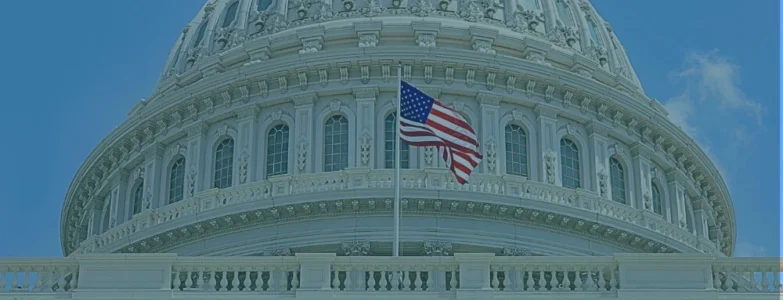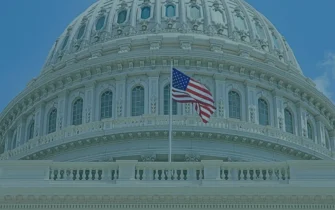By The Guillen Pujol CPAs Newsroom
The One Big Beautiful Bill Act (OBBBA) is now law, ushering in one of the most consequential overhauls of the U.S. tax system in recent memory. Its scope is sweeping—locking in the Qualified Business Income deduction, expanding Section 1202 gains exclusions, accelerating bonus depreciation timelines, raising the estate and gift tax exemption, and stabilizing federal income brackets for long-range planning.
Key provisions are already in force, with others rolling out through 2029. Some are permanent, others are time-limited, but all demand immediate attention. For global institutions and compliance-centric enterprises, the OBBBA alters the risk calculus—Whether you’re a business owner, investor, family office, or multinational enterprise, the OBBBA redefines how wealth is structured, preserved, and taxed. With changes impacting everything from expensing rules and retirement contributions to cross-border reporting and due diligence thresholds, tax planning is no longer elective—it’s imperative.
Below, we break down key highlights by taxpayer type to help you identify where the most significant opportunities and compliance risks lie.
For Business Owners and Firm Leaders
Permanent 20% Deduction for Qualified Business Income (QBI)
Pass-through entities—including LLCs, S-Corps, and partnerships—may continue to claim a 20% deduction on eligible income. However, specified service trades or businesses (SSTBs)—such as law, consulting, and financial services—remain excluded if taxable income exceeds $364,200 for married filing jointly or $182,100 for single filers.
Under the OBBBA, the phase-in range for the Qualified Business Income (QBI) deduction for specified service trades or businesses (SSTBs) has been expanded to $150,000 for joint filers and $75,000 for single filers—up from the previous $100,000 and $50,000, respectively. While the top income limits for full deduction eligibility remain unchanged, this broader phase-in zone allows more high-income SSTB taxpayers to claim partial QBI deductions—potentially unlocking significant tax savings.
Bonus Depreciation and Section 179 Expansions
Businesses may claim 100% bonus depreciation on qualified property placed in service after January 19, 2025—a provision now made permanent under the OBBBA, though many businesses continue to plan around a 2029 horizon for capital investments. Section 179 expensing has also been expanded, now allowing up to $2.5 million in qualifying investments annually, with the phase-out threshold beginning at $4 million.
These provisions especially benefit sectors like construction, logistics, manufacturing, and commercial real estate. Entities with significant infrastructure or capital expenditure needs should synchronize acquisition planning with audit-readiness and documentation standards—consult your CPA to optimize timing and eligibility.
Expanded Capital Gains Exclusions for C-Corp Shareholders
The OBBBA updates Section 1202 to expand eligibility for capital gains exclusions when selling Qualified Small Business Stock (QSBS). Previously, shareholders had to hold their stock for at least five years to qualify for a 100% capital gains exemption. Under the new rules:
- 50% exclusion if held for at least three years
- 75% exclusion if held for at least four years
- 100% exclusion if held for five years or more
This reform marks a significant expansion of Section 1202, providing original shareholders of qualified small C corporations a more flexible pathway to achieve partial or full exclusion of capital gains, depending on their holding period.
The new law also raises the eligibility threshold for corporations issuing QSBS from $50 million to $75 million in aggregate gross assets at the time of issuance. It further increases the per-issuer capital gains exclusion cap from $10 million to $15 million (or 10× basis, whichever is greater), indexed annually for inflation starting in 2026. Determining the aggregate gross asset value may involve additional considerations related to asset valuation, timing, and affiliated entities. These revised holding period thresholds and enhanced exclusion caps apply to QSBS acquired after July 4, 2025. For QSBS issued on or before that date, the $50 million threshold remains in effect. This tiered structure reduces the holding period barrier and enhances the attractiveness of C-Corp structures for founders, early employees, and long-term investors planning an eventual equity exit. Financial advisors and deal professionals should reassess exit timelines, entity structures, and investor eligibility to maximize tax-free outcomes under these revised QSBS rules.
ERC Program Terminated
The Employee Retention Credit (ERC) is officially terminated under the OBBBA, effective retroactively as of January 31, 2024. Claims submitted after that date will not be accepted. The IRS has expanded its enforcement toolkit, launching a Voluntary Disclosure Program (VDP) and extending audit authority for previously filed claims.
Businesses should conduct thorough compliance reviews of prior ERC filings and maintain clear, audit-ready documentation. This is especially critical for regulated entities—including broker-dealers, publicly traded companies, and any businesses subject to Sarbanes-Oxley (SOX) or SEC oversight. Unsubstantiated or poorly documented ERC positions may trigger enhanced scrutiny.
Expanded Employer Child Care Tax Credit
Beginning in 2026, eligible businesses may claim a nonrefundable tax credit equal to 50% of up to $1.2 million in annual qualified childcare facility expenditures, capped at $600,000. The credit applies to both facility operation and on-site child care services, with additional incentives for partnerships with licensed third-party providers.
This provision supports workforce retention, particularly for industries with high turnover or labor shortages. Businesses should assess infrastructure, location compliance, and eligibility requirements when designing qualifying programs.
For High-Income Individuals and Wealth-Holding Families
Increased Estate and Gift Tax Exemptions
Beginning in 2026, the federal lifetime estate and gift tax exemption will increase to $15 million per individual ($30 million for married couples), indexed annually for inflation. Unlike the TCJA temporary increase, the OBBBA makes this expanded exemption permanent.
High-net-worth individuals should consider:
- Updating irrevocable trusts like GRATs and IDGTs for tax efficiency.
- Accelerating lifetime gifting to lock in the exemption.
- Reevaluating international trust structures in light of evolving global reporting regimes such as FATCA and CRS
Stabilized Federal Tax Brackets
The OBBBA locks in the current seven federal income tax brackets, ranging from 10% to 37% on a permanent basis—supporting long-term tax planning strategies, from Roth conversions and charitable contributions to capital gains management. It also facilitates better coordination with multi-year financial and retirement planning models.
Stricter Alternative Minimum Tax (AMT) Phaseout Rules May Increase Exposure
The OBBBA makes permanent the AMT exemption amounts established under the TCJA, but it also tightens the phaseout rules. Starting in 2025, the exemption begins to phase out at $626,350 for single filers and $1,252,700 for joint filers. The phaseout rate has been doubled—from 25% to 50%—increasing the likelihood that more high-income earners—even with no significant change in income—will trigger AMT liability.
Projected AMT exposure should be stress-tested across compensation arrangements, incentive stock options, and passive investment structures—particularly for executives in high-growth, deferred-comp structures, or equity-linked compensation.
For Residents of High-Tax States
Temporary Increase in SALT Deduction Cap
The State and Local Tax (SALT) deduction cap will rise from $10,000 to $40,000 in 2025, with a 1% annual increase through 2029. A gradual phaseout begins at $250,000 for single filers and $500,000 for married joint filers.
Taxpayers in high-tax jurisdictions such as California, Connecticut, Hawaii, Illinois, New York, New Jersey, and Vermont, should weigh passthrough entity SALT workaround elections, timing strategies for state tax payments [within the applicable years], and revised withholding protocols in consultation with a tax advisor to optimize exposure.
For Families and Long-Term Savers
“Trump Accounts”
Families with children born on or after January 1, 2025 may contribute up to $5,000 annually for each eligible child to a new tax-advantaged savings account. These accounts support education and long-term wealth accumulation, with a $1,000 federal match and up to $2,500 in optional employer contributions. The program is authorized through 2028.
Student Loan and 529 Plan Enhancements
Under the OBBBA, 529 plans can now cover additional educational expenses, including homeschooling, dual-enrollment, and vocational training. Employer-provided student loan repayment assistance (up to $5,250 annually) remains tax-free through 2025 under the CARES Act. Unless reauthorized, this provision sunsets at year-end.
What’s Permanent, What’s Temporary?
| Provision | Effective Dates | Status | Planning Tip |
| Estate & Gift Exemption | Starting 2026 | Permanent | Reevaluate trust structures and gifting strategies under stable limits |
| QBI Deduction | Now | Permanent | Analyze entity type and income thresholds for full deduction access |
| Bonus Depreciation | After Jan 19, 2025 | Permanent | Time capital expenditures to align with record-keeping and internal audit cycles |
| QSBS Capital Gains Exclusions | Enhanced in 2025 | Permanent | Holding periods shortened and eligibility thresholds improved for tax-free exits on C-Corp stock. |
| SALT Cap Raised to $40K | 2025 – 2029 | Temporary | Plan for phased cap increase and income-based phaseout |
| Trump Accounts | 2025 – 2028 | Temporary | Use for newborn wealth planning and qualified educational savings |
| Childcare Credit | From 2026 | Permanent | Leverage credit to enhance workforce retention and benefits strategy |
| AMT Phaseout Tightening | Now | Permanent | Model AMT exposure based on revised phaseout thresholds and rates |
| ERC Program | Ended Jan 2024 | Terminated | Conduct review of prior claims and prepare for compliance verification |
Key Questions to Discuss with Your CPA or Tax Advisor
Before your next tax planning, consider asking:
- Could my business benefit from bonus depreciation or the expanded Section 179?
- Should I restructure to better qualify for the QBI deduction?
- How might a different entity type improve my tax position under the OBBBA?
- Do recent estate tax changes require updating our family plan or trust documents?
- How might the SALT deduction changes affect my 2025 return?
- Are Trump Accounts a viable tool for our children’s education or intergenerational savings?
- If I claimed ERC benefits, what documents should I prepare in case of IRS review?
- Are my operational structures optimized for multi-jurisdictional tax efficiency?
- What risk controls and documentation procedures should be adopted under the OBBBA?
This legislation introduces both immediate tax-saving opportunities and long-term planning implications for compliance, transparency, and financial oversight. Organizations navigating supervisory frameworks, expansion across borders, or changes to ownership structure will need to integrate these reforms into both their tax and governance strategies.
A deliberate, informed approach—grounded in expertise—remains the clearest path to resilience. Whether you’re a multinational realigning governance, a private firm expanding operations, or a family preserving generational wealth, the OBBBA’s 2025 tax changes demand professional counsel. Partnering with a qualified CPA firm ensures you can adapt proactively and responsibly to these changes—from capital gains strategies and bonus depreciation planning to understanding estate and gift tax exemptions in 2026, SALT deduction changes in 2025, and revised AMT thresholds.
Expert guidance keeps you compliant and ahead of the curve.
This article is for informational purposes only and does not constitute tax, legal, or financial advice. Always consult a qualified professional before making changes to your strategy. If you have specific questions or would like tailored guidance, we welcome you to schedule a brief consultation with our tax team.
Take Action Now: Need professional tax guidance? Contact us today.
Planning Tomorrow, Together, with GPCPAs.
Trusted by Businesses Worldwide
Editor’s Note: This article is part of the ‘GPCPAs Info Hub,’ a platform built to empower your decision-making with clarity and confidence. Visit our Information Hub for expert perspectives on tax, economics, and business–alongside actionable guidance in accounting, tax strategies and business advisory. Whether you’re planning across borders, building a business, or preserving wealth, our platform is here to support your next steps–because Planning Tomorrow Starts Here.
- Florida’s Hunting, Fishing & Camping Sales Tax Holiday 2025: A Guide for Shoppers & Businesses
- Navigating the ‘One Big Beautiful Bill’: Implications for Global Tax Planning
- How International Investors Can Reduce U.S. Taxes in 2025—Legally
- IRS Imposes $162M in Penalties Over Social Media Tax Scams: What Business Owners Should Know
- IRS Refunds After Paper Checks End in 2025: FAQs for Expats and Non-Residents











